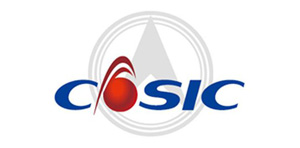Chinese scientists are developing a giant electromagnetic rail gun to launch hypersonic planes into space. The space plane would be larger than a Boeing 747, and the tech could help reduce launch costs.
The South China Morning Post (SCMP) reports that when the rail gun is in operation, the giant fifty-ton space plane will be launched at twice the speed of sound. Chinese scientists have been working on the Tengyun project since 2016. They believe they are very close to making a breakthrough.
The Tengyun railgun is an electromagnetic launch track used to accelerate a hypersonic aircraft to Mach 1.6. The enormous space planes will exceed one hundred and thirty feet in length and weigh fifty metric tons. That length is longer than a Boeing 737.
After launch, the space plane would leave the track and enter space upon igniting its engine. The new technology could drastically reduce launch costs. This is especially appealing to companies like NASA and SpaceX, which have not yet successfully developed an electromagnetic launch system at this scale.
Relying solely on the space plane’s own power for lift-off from Earth would require a significant amount of fuel. The team also faced problems in finding a way to combat the dangers of a low-speed take-off.
The Chinese engineers reportedly had to compromise on the aerodynamic design and engine layout of the space plane. This impacted the plane’s high-speed flight efficiency. Scientists working on the Tengyun project are certain that they can solve the current issues.
Li Shaowei is the lead scientist on the Tengyun project. He said in a paper published in the journal Acta Aeronautica on February 6. “Electromagnetic launch technology provides a promising solution to overcome these challenges and has emerged as a strategic frontier technology being pursued by the world’s leading nations.”
To test the team’s prototype, China Aerospace Science and Industry Corporation (CASIC) will use the one-mile long low-vacuum track high-speed maglev test facility in Datong.
The maglev test laboratory’s original purpose was to provide a key test platform for the low-vacuum tube magnetic levitation train technology. It is now used for aerospace testing due to its ability to propel heavy objects at up to six hundred and twenty mph.
The Datong test facility will be extended to thirty seven miles long, to achieve a maximum operating speed of three thousand one hundred mph in the future.
According to SCMP, the laboratory is considered one of the most “ambitious electromagnetic propulsion facilities on the planet”. This is why it will now be used to gather crucial scientific data for the space electromagnetic launch project.
NASA and the U.S. Navy have also experimented with electromagnetic space launch systems and hypersonic planes.
In the 1990s, NASA attempted to construct a fifty-foot mini-test line but could only complete around thirty-two feet because of technical difficulties and a lack of funds.
The military officials decided to abandon their ambitious project and instead focused on developing low-speed electromagnetic catapult technology.
